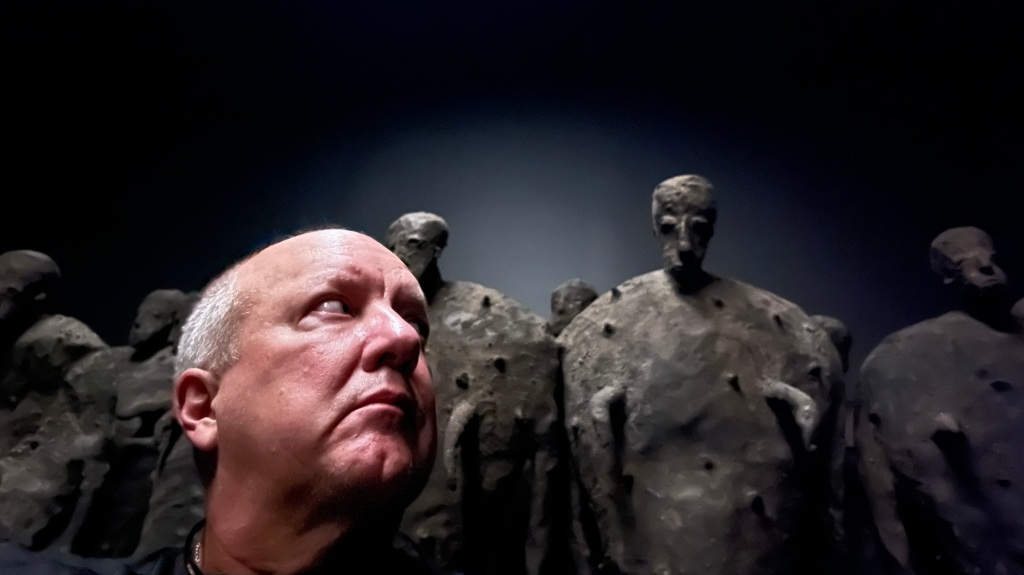A beautiful day for walking around the city. It started off in an12th century church, made a deviation into some level of hell, and came out the other side with a delicious espresso.
Vår Frue Kirke (The Church of Our Lady) is only a block from the hotel and is one of the oldest buildings in Trondheim, with parts of the building dating back to the 12th century. It now functions as a church, but also community outreach center for the poor. It is sponsored by the Cathedral.
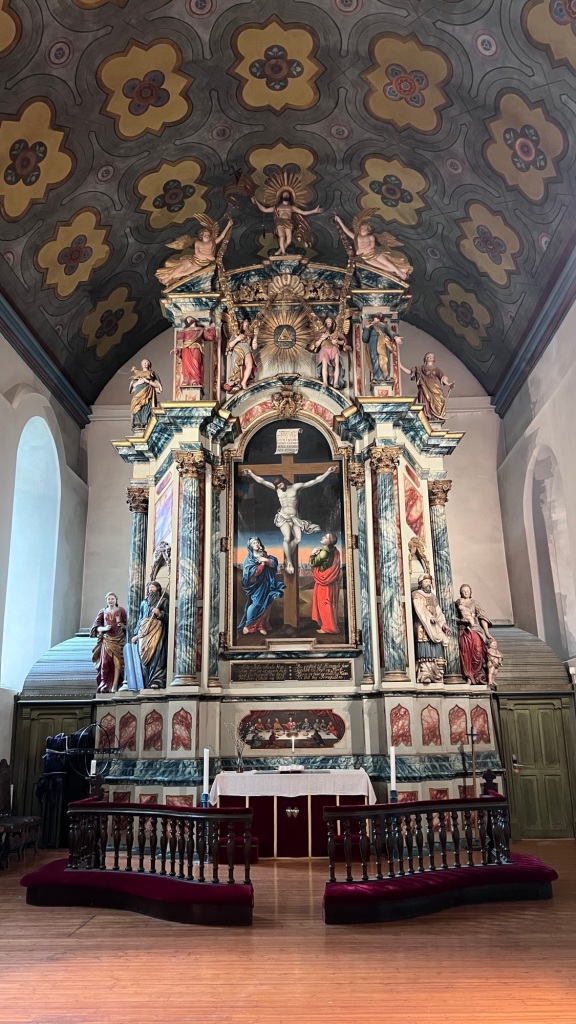
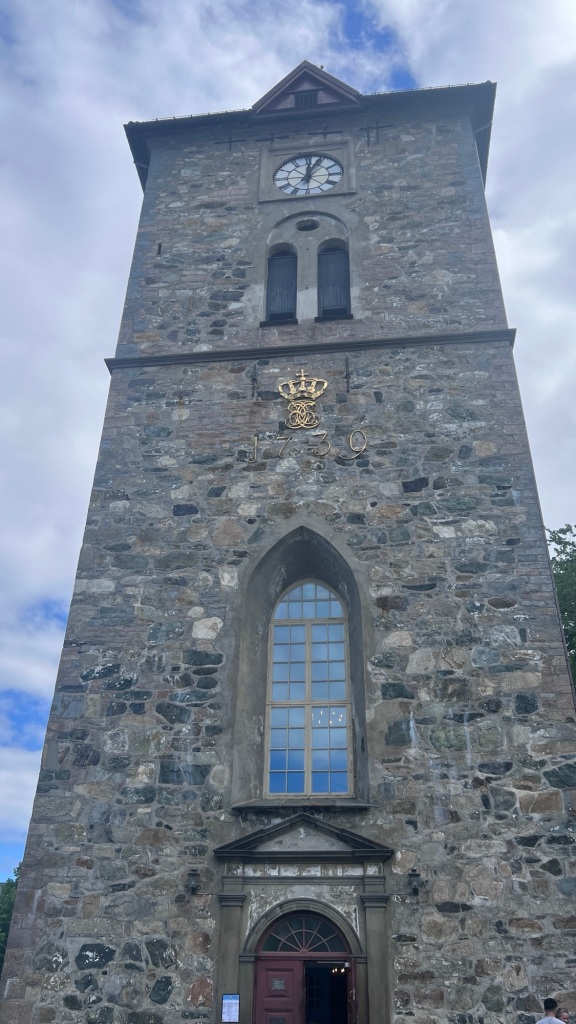
I saw some pictures of the next stop, about a half mile further, and decided it might be interesting.
Oh.
My.
Goodness!
It was worth the trip to Trondheim. The Salamandernatten (The Salamander Night).
The Salamander Night is an art installation made by Trondheim artist Kjell Erik Killi Olsen for Sao Paulo’s biennial anniversary in Brazil in 1989. The installation is comprised of 72 sculptures, all of which are more than 3 metres high (about 10 feet). The Salamander Night was presented as a gift to Trondheim municipality by the artist in 2007. This wonderful piece of art may be seen in the premises of the bank “Sparebank1 Midt-Norge” in Sendre gate.

The light is quite low, so those pictures that are bright are adjusted or I used a flash so that you could see the sculptures.
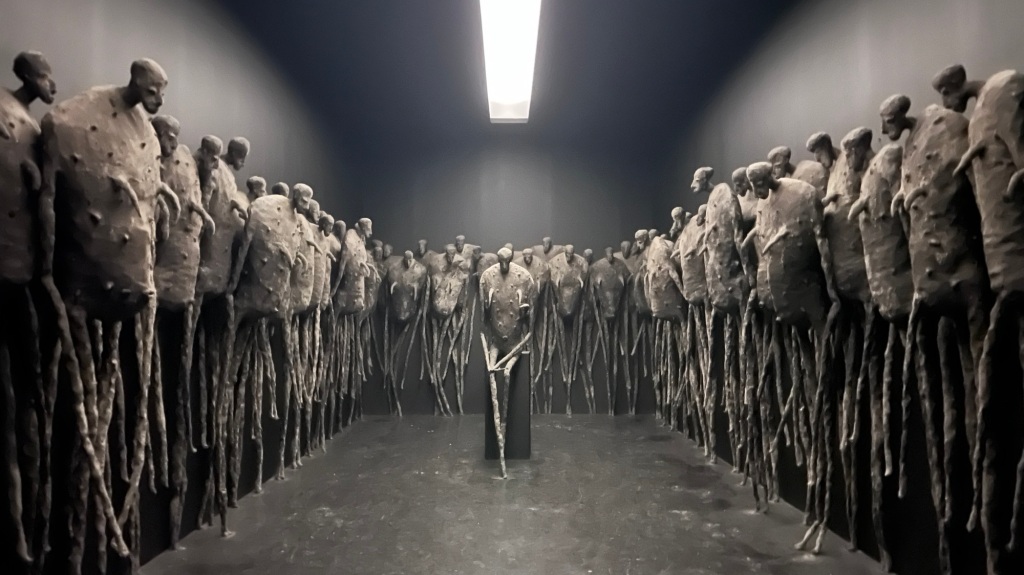

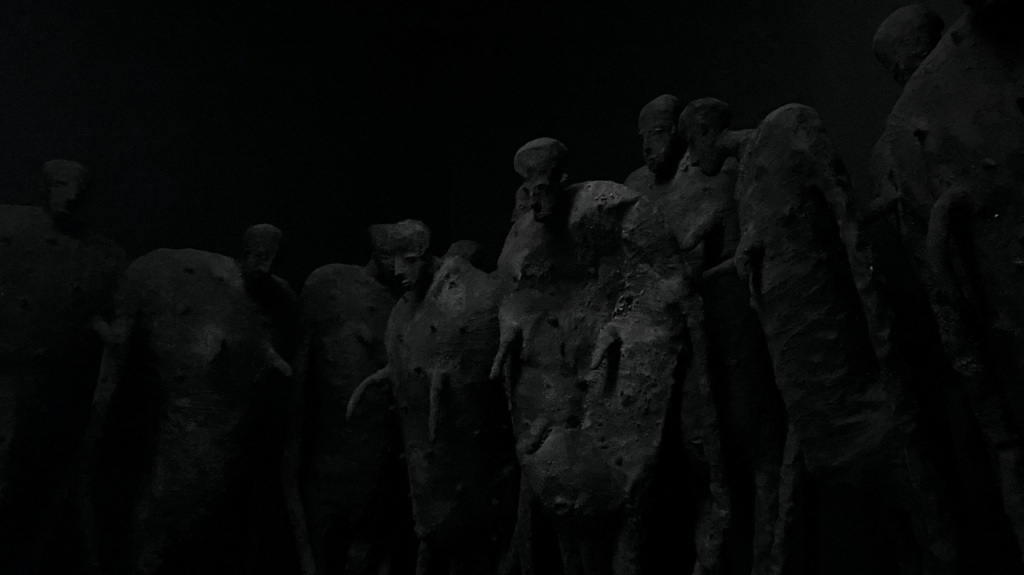
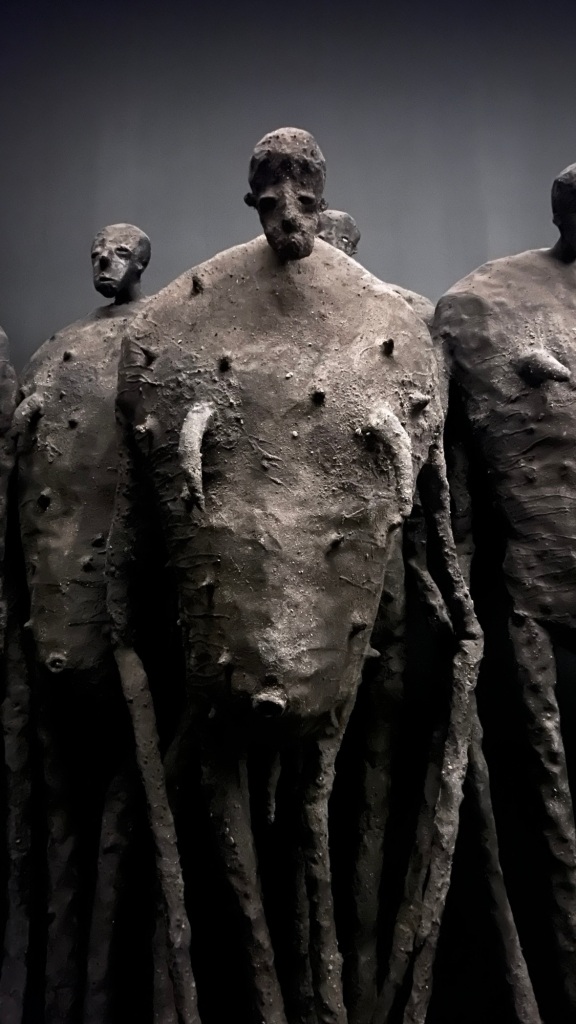
Made a short video for your viewing pleasure. The sounds are from the cafe above, but they do add a bit of ambiance.
Fortunately, there were other exhibits in the same location that weren’t as freaky (sarcasm alert).
The 12th century church ruins are the remains of a Romanesque stone church. The church had an underground crypt, a very rare element in Nordic churches. Such crypts have normally had a cultic function in connection with saint worship and functioned as a place of pilgrimage.
As luck would have it, they kept the “saint” around.

And they gave him/her a few companions.
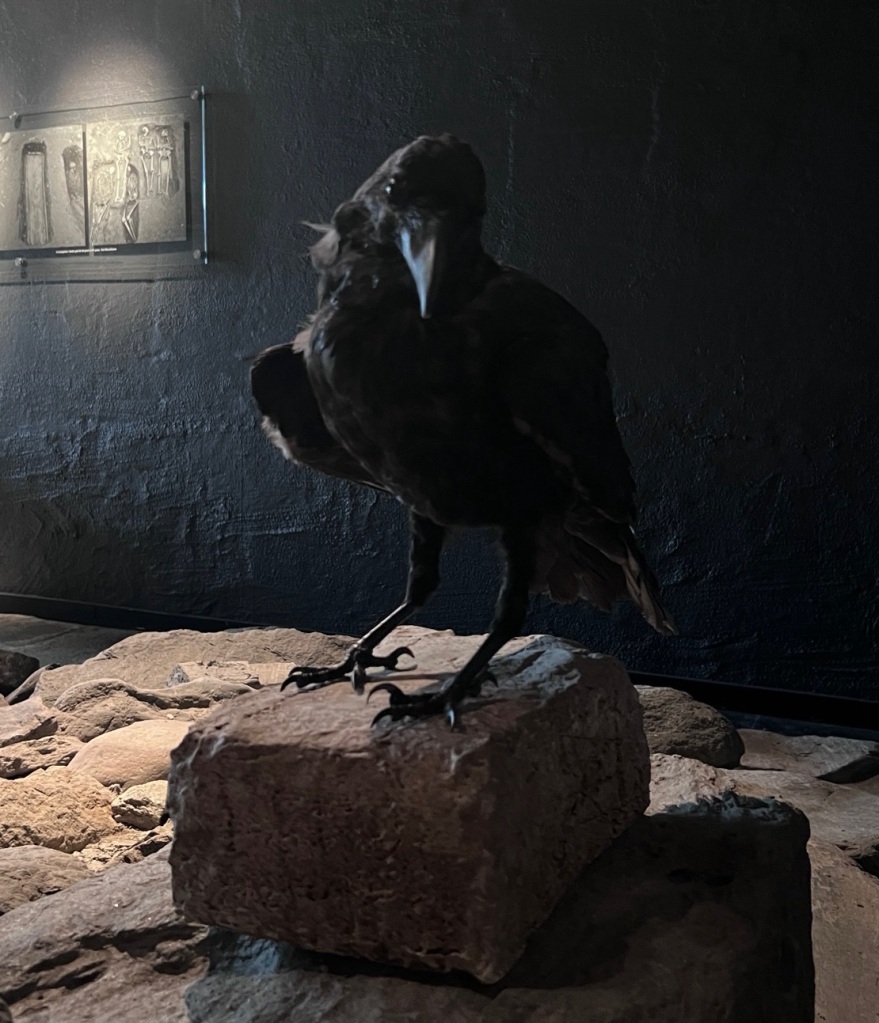
Nevermore… moving on to a happier little bird in another exhibit. I loved the shadows. It is part of the series Twelve Stories by Nils Aas.
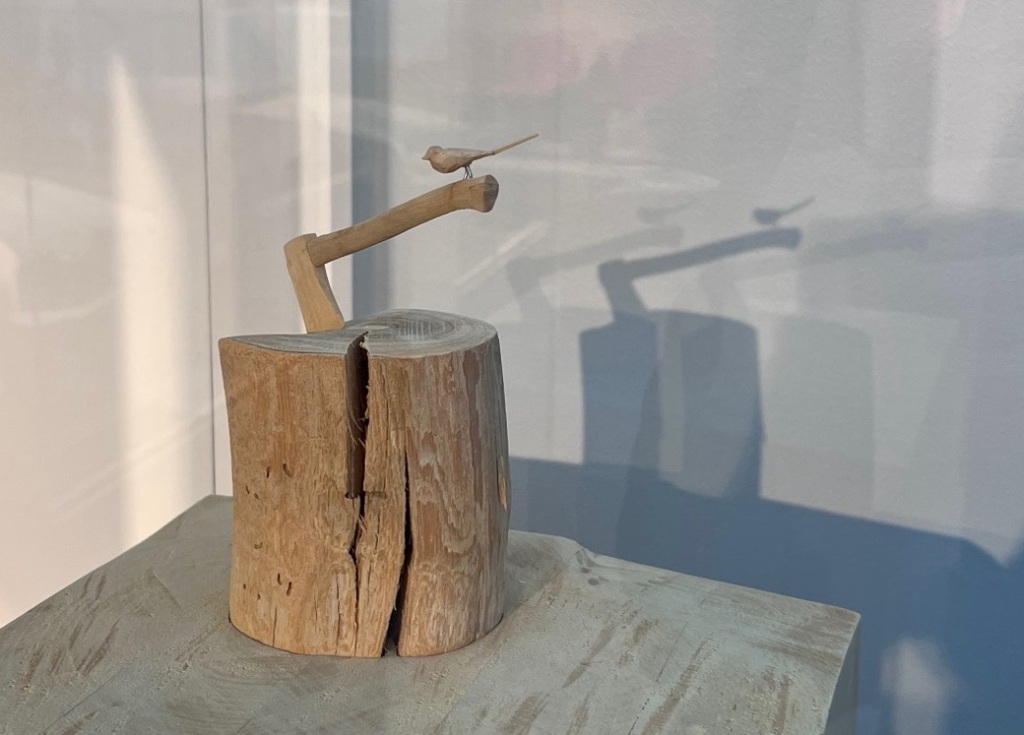
After all that, I moved outdoors and crossed the Blomsterbrua (Flower Bridge) and entered Solsiden (The Sunny Side), the trendy happening section of town that is next to the harbor.
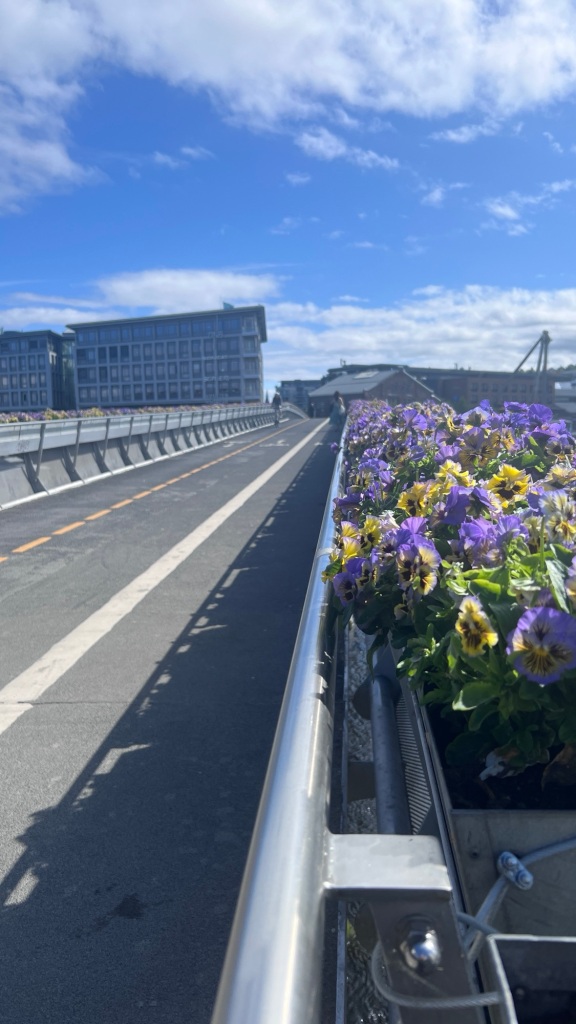
It was quiet this morning, and after a bit I stopped for an espresso (perhaps the best I’ve ever had, and that’s saying something because I’ve had plenty.) A little place called Dromedar Kaffebar.

I bought some beans to bring home and hope to find out how to order more.
On the way back to the hotel, I found the second bridge that I was looking for (had no idea I was interested in bridges.)
Gamle Bybro (The Old Town Bridge) was first built on this site in 1681, at the same time as Kristiansten Fortress was constructed. A sentry and excise house stood at either end of the bridge. The excise house on the western side is still standing and is used as a kindergarten. The bridge and gates as they now stand were built in 1861.
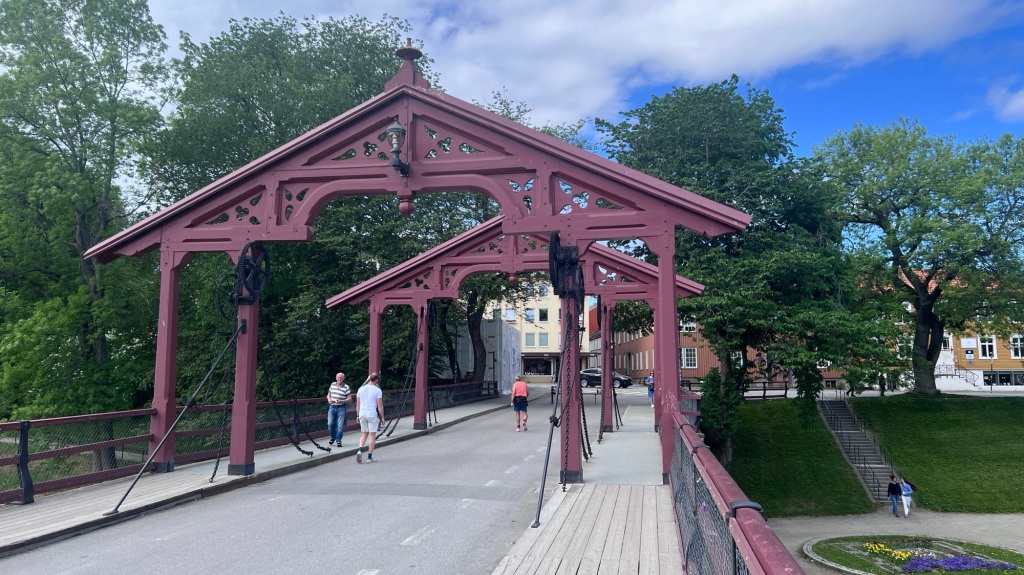
From the center of the bridge is the quintessential Norwegian photo op.
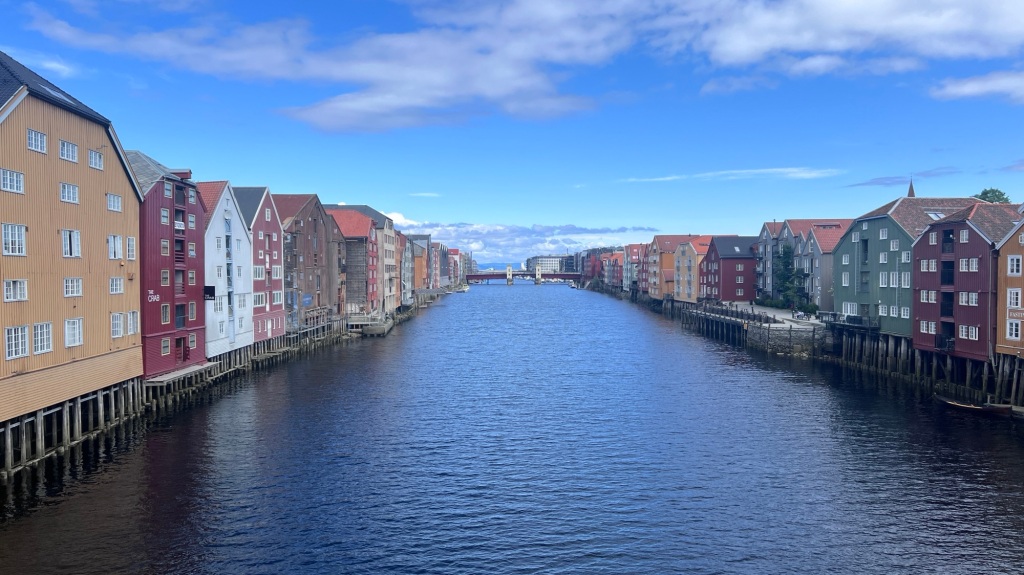
On the way back, I passed through the square and said, “Hello,” to Olaf. He holds up the dove (peace), but also carries a sword. I suppose he is saying, “It’s your call.”
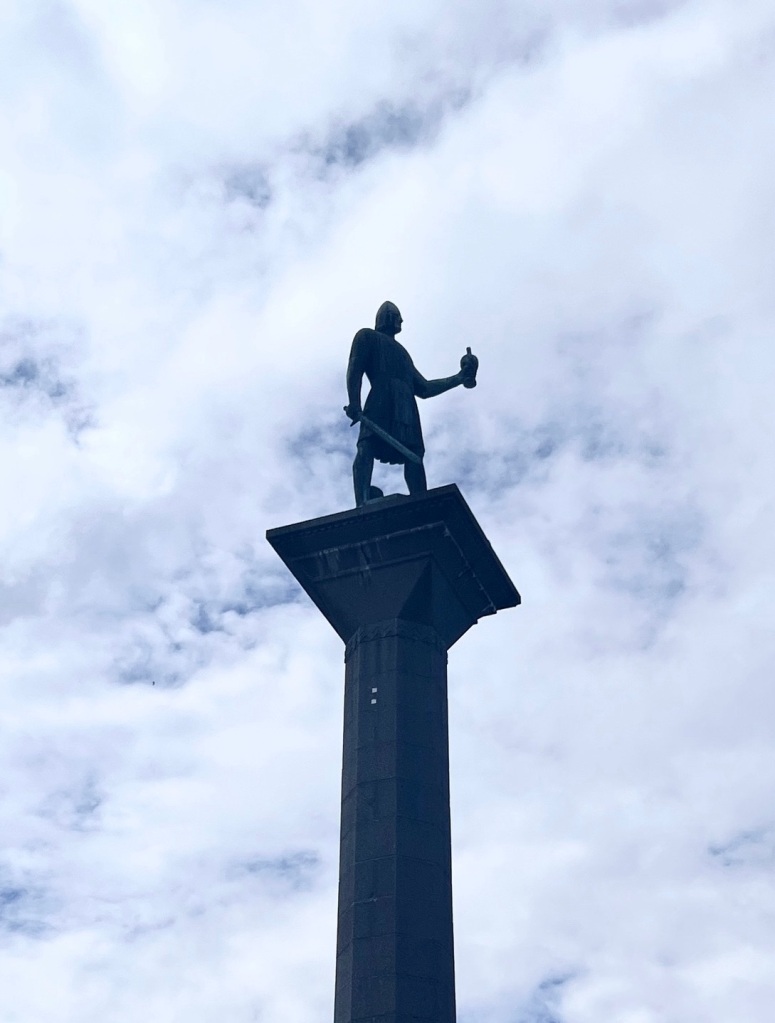
This is likely my last travel post for a while. I’ve got some other writing that I want to work on… I had started a dystopian novel, but Miss Avery (I hope she lives through this one) insisted that I write of Dean Anthony’s most recent adventure. Will there be a murder? Where? Who done it? Working title: The Forty-Seventh Wife. It’ll probably stick.
And, for the record, I’ll be looking over my shoulder for a while.
